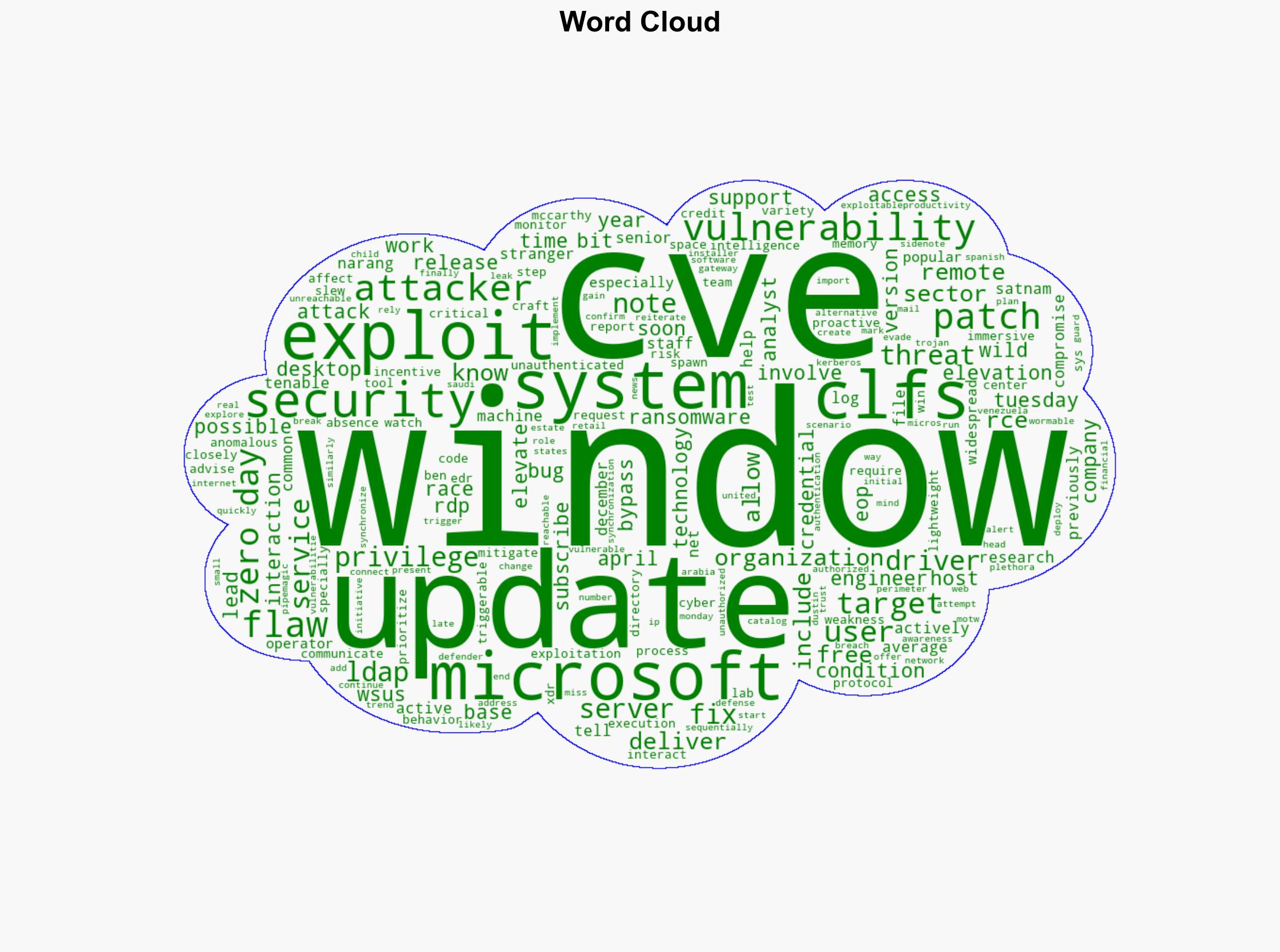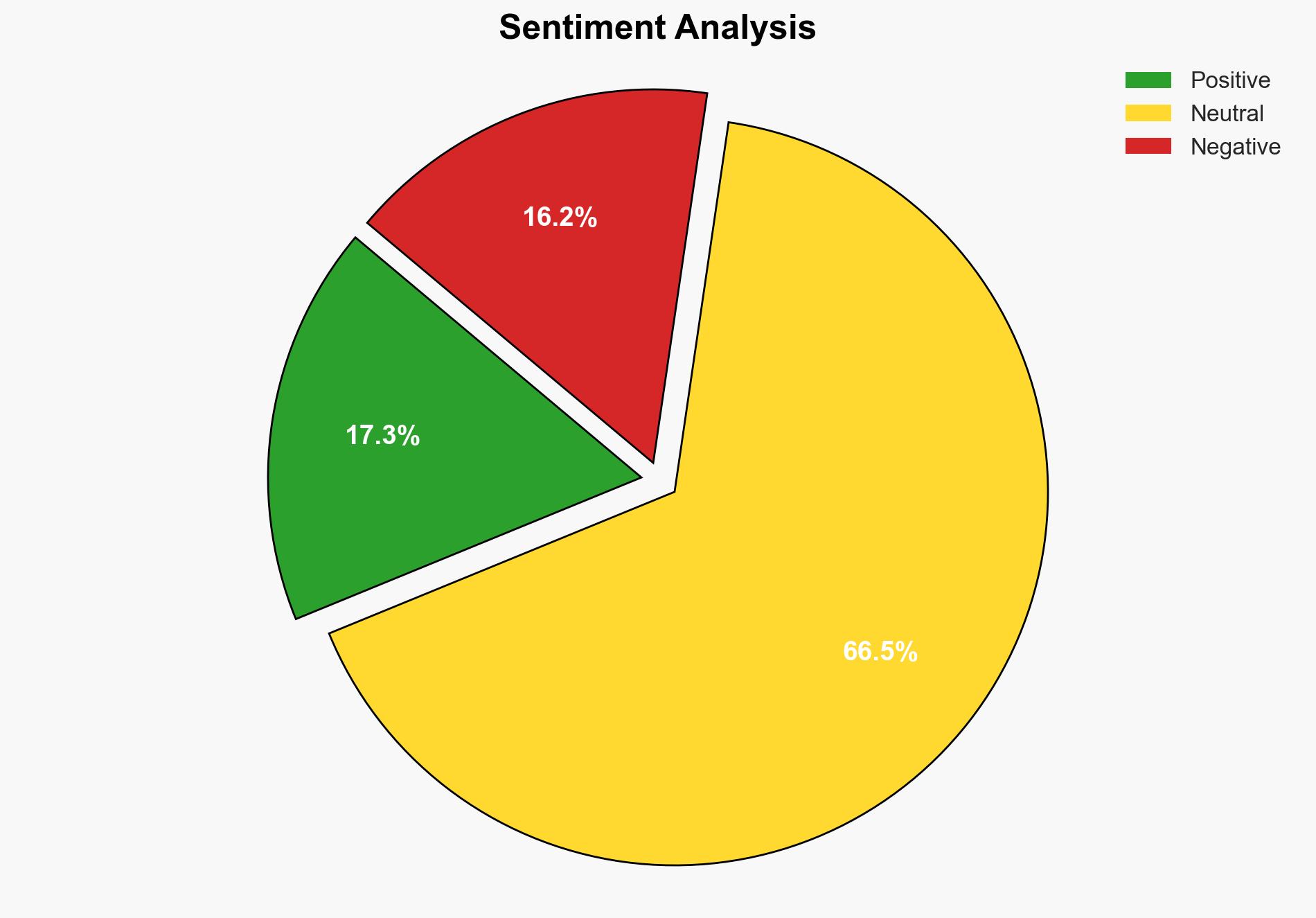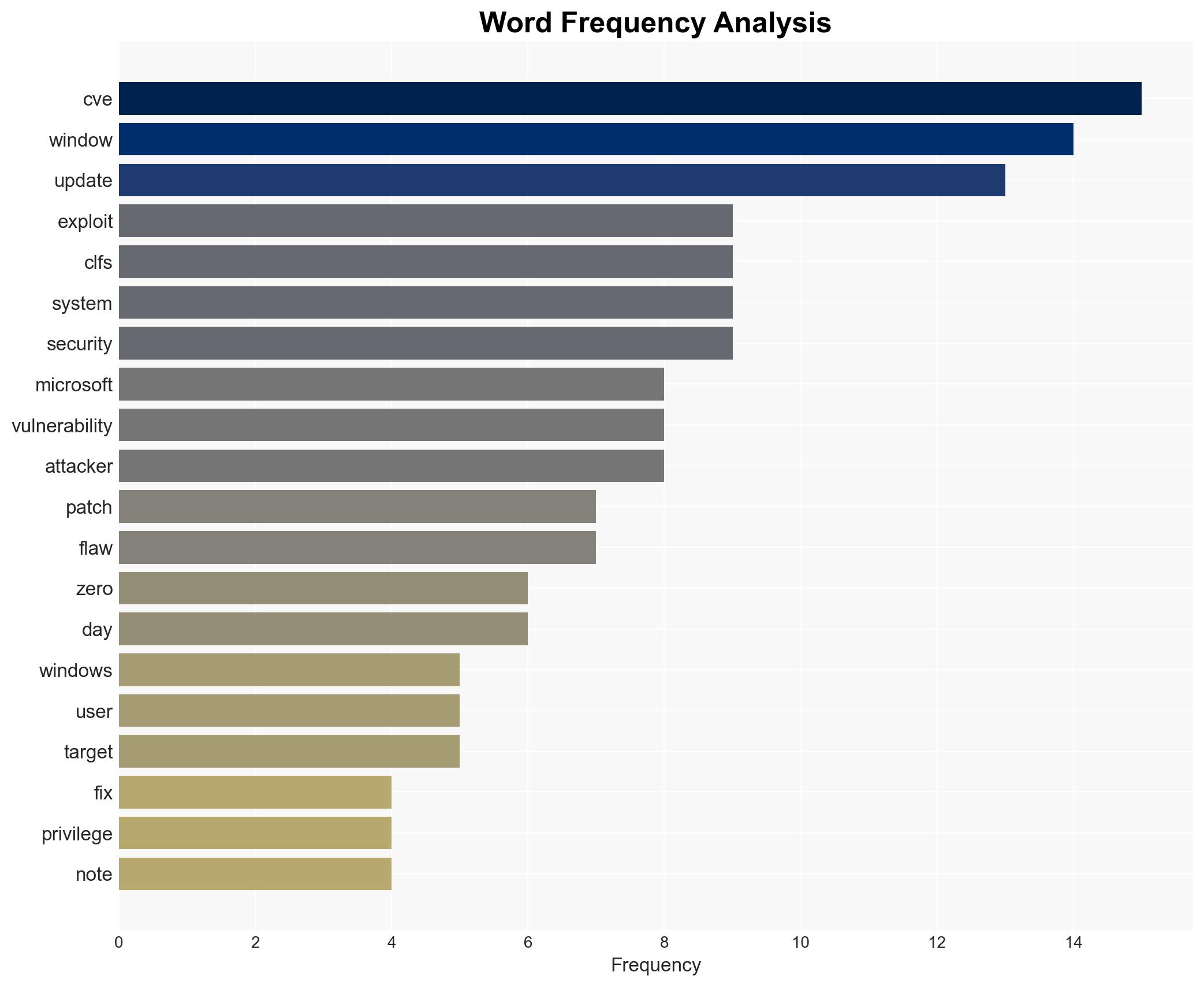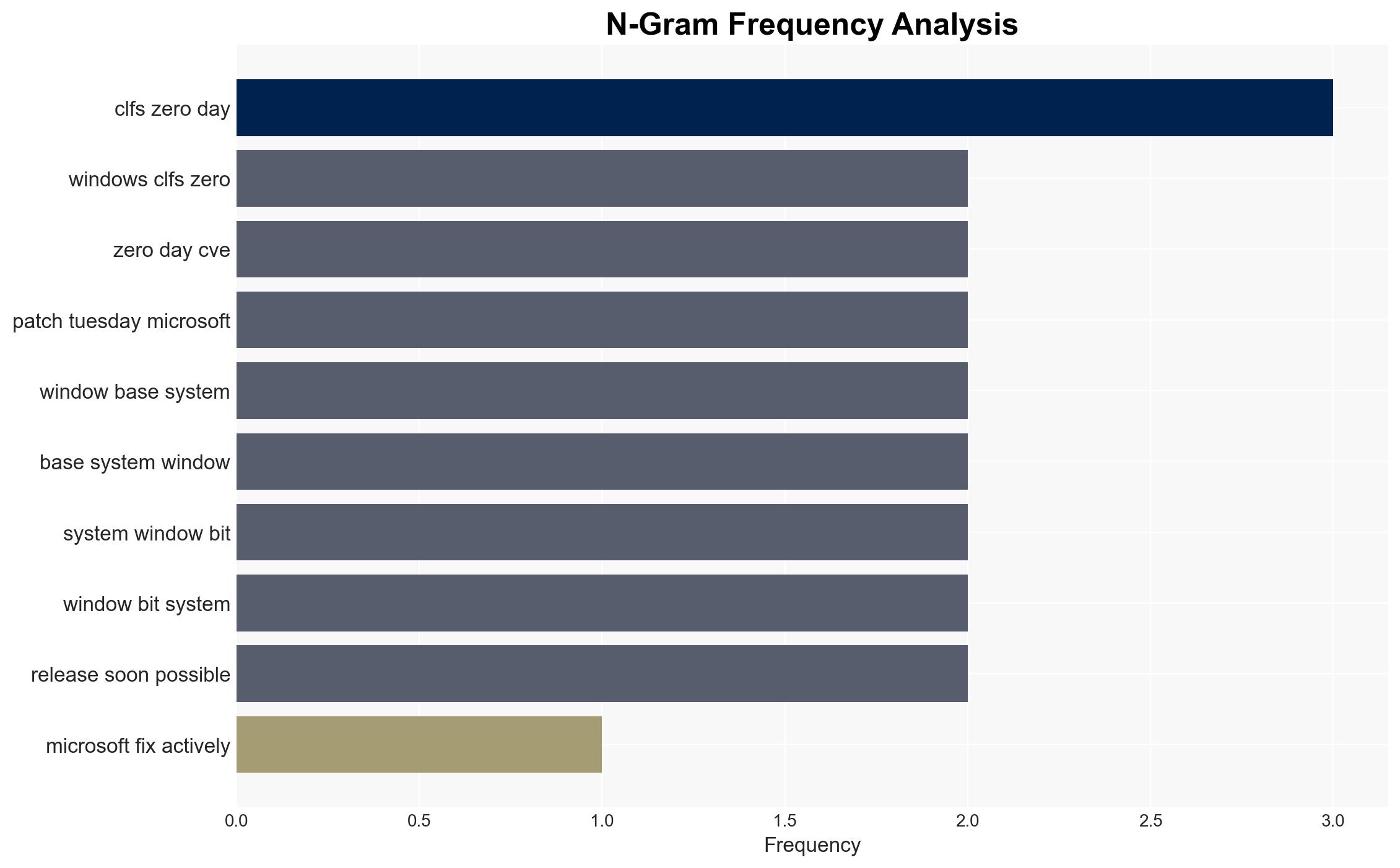Microsoft fixes actively exploited Windows CLFS zero-day CVE-2025-29824 – Help Net Security
Published on: 2025-04-08
Intelligence Report: Microsoft fixes actively exploited Windows CLFS zero-day CVE-2025-29824 – Help Net Security
1. BLUF (Bottom Line Up Front)
Microsoft has released a critical security update to address a zero-day vulnerability, CVE-2025-29824, within the Windows Common Log File System (CLFS). This vulnerability has been actively exploited in the wild, allowing attackers to elevate privileges on compromised systems. Immediate action is recommended for organizations to apply the patch and monitor for any anomalous activities related to the CLFS driver.
2. Detailed Analysis
The following structured analytic techniques have been applied for this analysis:
General Analysis
The vulnerability CVE-2025-29824 in the Windows CLFS has been exploited by attackers to gain elevated privileges, which can lead to further system compromise. This flaw has been particularly attractive to ransomware operators. The patch, released as part of Microsoft’s April Patch Tuesday, addresses this and other vulnerabilities, including critical remote code execution (RCE) flaws. The urgency of this patch is underscored by its exploitation in the wild and the potential for widespread impact if not addressed.
3. Implications and Strategic Risks
The exploitation of CVE-2025-29824 poses significant risks to national security, regional stability, and economic interests. The vulnerability’s use by ransomware operators could lead to disruptions in critical infrastructure and financial losses. The potential for unauthorized access and data breaches could undermine public trust and affect international relations if state-sponsored actors are involved.
4. Recommendations and Outlook
Recommendations:
- Organizations should prioritize the deployment of the security update for CVE-2025-29824 across all affected systems.
- Implement enhanced monitoring of the CLFS driver using EDR and XDR tools to detect and respond to suspicious activities.
- Consider regulatory measures to enforce timely patch management practices across critical sectors.
Outlook:
In the best-case scenario, rapid deployment of the patch will mitigate the immediate threat, reducing the risk of further exploitation. In the worst-case scenario, delayed patching could lead to increased ransomware attacks and data breaches. The most likely outcome is a gradual reduction in successful exploits as organizations implement the patch and enhance monitoring capabilities.
5. Key Individuals and Entities
The report mentions significant individuals such as Satnam Narang, Ben McCarthy, and Dustin Child. These individuals have contributed insights into the nature of the vulnerability and the importance of prompt patching. Their perspectives highlight the critical need for vigilance and proactive security measures.





